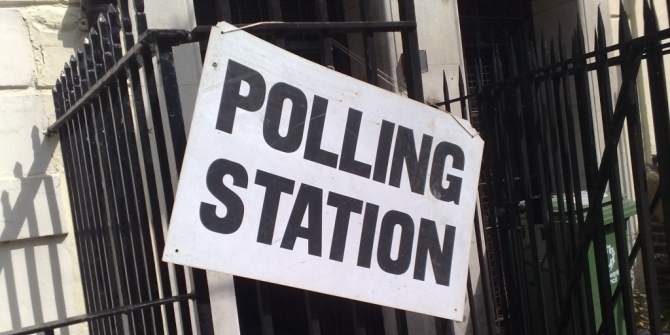 Although the uses of social media have come to include the promotion of human rights by organised groups, and although this form of digital citizenship often articulates views that would be neglected in conventional public debates, not all events attract the same attention or even gain momentum. Paul Reilly explains how reactions to alleged police brutality in Northern Ireland illustrate this point.
Although the uses of social media have come to include the promotion of human rights by organised groups, and although this form of digital citizenship often articulates views that would be neglected in conventional public debates, not all events attract the same attention or even gain momentum. Paul Reilly explains how reactions to alleged police brutality in Northern Ireland illustrate this point.
The visibility of big campaigns such as #BlackLivesMatter illustrates how the use of social media by advocacy groups can help shape public debates about policing and human rights. Yet, not all online campaigns have the same impact. Take, for example, the way online tools were used to highlight what was perceived to be partisan policing in Northern Ireland in March 2016. After the Junior Orange Order parade in south Belfast on the 27th March 2016 its supporters heavily criticised the Police Service of Northern Ireland (PSNI) for their use of CS spray in the disturbances that followed. Supporters of the Protestant fraternal organisation claimed that the incident, which left nine children requiring medical treatment for eye surgeries was perceived as evidence of a ‘two-tier’ policing system that treated loyalists less favourably than their republican counterparts.
The PSNI rejected such allegations and expressed regret that children had been inadvertently injured by the use of CS spray by officers, who according to official sources had intervened to stop the marchers from damaging parked cars. Contested narratives in relation to this incident would quickly emerge on social media sites. Loyalist organisations such as the Protestant Coalition used its social media presence to question the legality of the use of CS spray against children, to organise protests against the PSNI, and to publish an open letter to First Minister Arlene Foster, accusing the PSNI of deliberately targeting loyalist communities.
At the same time, many individual online commentators defended the police and disputed claims that the use of CS spray had been indiscriminate and unprovoked. They also joined Assistant Chief Constable Stephen Martin in his condemnation of the loyalist Facebook page that published the name and address of one of the PSNI officers involved.
There was also a mixed response to video footage of the incident made available by the local news outlet UTV Live. Those viewers who commented upon this sousveillance (inverse surveillance) footage tended to conform to the finger-pointing and blaming of the ‘other’ community that has so often characterised online interactions around contentious issues in Northern Ireland and elsewhere.
Indeed, this was a recurring theme in my own research into how YouTube was used by loyalists to share sousveillance footage of the policing of the union flag protests in January 2013. This footage purported to show PSNI brutality against loyalists who blocked roads across Northern Ireland to demonstrate their opposition to Belfast City Council’s decision to alter its protocol on the flying of the Union Flag over Belfast City Hall from all-year round to 18 designated days.
A study of 52 videos showed that such content was as likely to raise questions about the behaviour of the flag protesters, as it was of the police. This perhaps reflected the ambiguous nature of much of this footage, which did not appear to corroborate loyalist claims that they had been the victims of police brutality. Some commentators used crude and sectarian language to describe the flag protesters while loyalists criticised the heavy-handed approach of the PSNI. Moreover, many of these comments appeared to show little to no engagement with the events captured on camera. Although YouTube appeared to provide a public space in which police actions could be scrutinised, the views of many of the commentators still appeared to be strongly influenced by the news media framing of loyalist protesters.
It would be premature to dismiss the role of social media in holding institutions such as the PSNI to account for their actions. The eyewitness footage and testimonies that circulated on these sites will no doubt provide valuable evidence for the investigation by the Police Ombudsman into the legality of the use of CS spray during this incident. Whether this leads to these officers facing disciplinary action remains to be seen.
Nor would it appear likely that public opinion towards the PSNI or the Orange Order will shift dramatically as a result of this user-generated content. Nevertheless, this nascent form of digital citizenship may prove crucial in articulating views that are neglected by the mainstream unionist political parties that purport to represent them.
_____
 Paul Reilly is Senior Lecturer in Social Media & Digital Society in the Information School at the University of Sheffield.
Paul Reilly is Senior Lecturer in Social Media & Digital Society in the Information School at the University of Sheffield.








